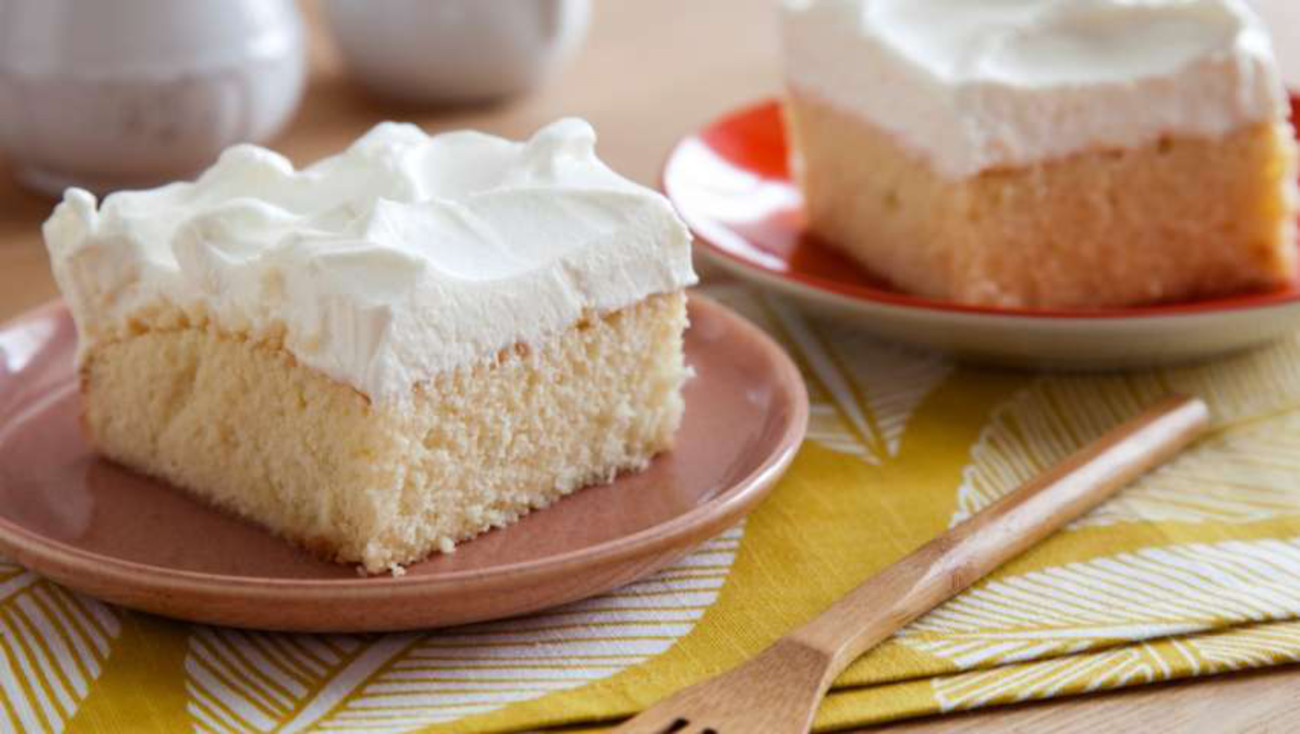You don’t always need a reason to celebrate to have this creamy, flavor-injected cake called pastel de tres leches (tres leches cake). A classic sponge cake is soaked with three distinct milks and topped with a hefty coating of whipped cream that comes across as a vanilla cake, but this cake’s deceitfully plain appearance will have you over the moon. In America, it’s more strongly associated with Mexico, but there’s more than one country to tie itself to this dessert. Nicaragua has deep connections with this cake, in a sense, it’s a sort of battle of which country claims origin rights to this dish. Neither the story nor the origins of tres leches cake are clear cut. The big question is: How did tres leches cake become so popular in two separate countries?

Going back in history, food exchanges through interactions have been the greatest catalysts for shifts in regional eating patterns, especially in Europe. Spices imported from Southeast Asian countries opened up a world of flavor (albeit for the rich). Yet, as spices got cheaper and more accessible, they appeared in more and more recipes. And to a region of the northern world that was limited to seasonal greens and salt, the addition of spice was a game changer in eating patterns. Tomatoes, brought over from South and Central America, forever changed the base of classic Italian cuisine. Nowadays, it’d be impossible to have modern Italian cuisine without this drastic culinary exchange.

The countries colonized in Central and South America were also influenced by the culinary techniques of the colonizers. Unwilling to adapt to local ferns and fauna, colonizers imported cattle and forced the growth of wheat production in these lands. While only initially for the colonizers, the diet of wheat and dairy-based recipes increased among locals. This combination of wheat and dairy was a basic diet among the poor in England and Europe. Medieval England documented recipes of soaked cakes, which were ways to revive and lengthen the edibility of cakes and pastries that had well exceeded their time.

These recipes from colonizing countries seeped into the local environment of both Mexico and Nicaragua. During the peak of the Age of Exploration, the Nicaraguan region was dominated by the Spanish in the west and the British in the east. From these European interactions, English dishes made a splash in Nicaragua. European culinary exchanges in Central America became a business — with sugar cane production and cattle farms increasing exponentially. These three factors — English milk-soaked cakes, sugar crops, and a cattle industry — set the stage for tres leches cake to be born in Nicaragua. Dishes like Nicaragua had Pio Vi (a rum-soaked custard-topped Christmas cake) and sopa borracha (another rum-soaked trifle-like dessert) are definitely predecessors to the modern-day tres leches cake.

While capitalist businessmen fueled the influx of European recipes into Nicaragua, Mexico’s influence with soaked desserts can be traced back to religion and missionary work. In Spanish Catholicism, these milk-soaked treats were eaten on Holy Days in celebration. Spain’s influence with their sopa (better known as bread pudding) probably influenced the region. The sugar and alcohol protected the cake so it would stay fresh for hours of celebration. Just like the rum-soaked Nicaraguan sopa borracha, Mexico’s capirotada (a rum-soaked bread pudding) was a similar dessert but made during Lent.

Yet up until the 20th century, most desserts used milk with a risk. For a long time, milk had always been quite an unsafe liquid to drink, and it took manufacturers a while to reduce the risk of botulism and other foodborne illnesses. You definitely have to fast forward a few hundred years or so to get to Tres leches cake.

In the 20th century, companies like Borden and Nestle saw opportunities in Central and Latin America, and throughout the 1930s and onward, opened factories to produce goods, canned milk being among them. Though canned milk had been around since the 1890s, it hadn’t landed in Central and South America until the 20th century. When WWII pushed companies to manufacture more canned goods, processes improved drastically. Creating canned milk was streamlined and perfected to some degree, with low rates of contamination.

So it’s certain that the 20th century was tres leches cake’s beginning. When and who mixed three canned milk to create an almost-mythically rich tres leches cake is uncertain, but the mass-produced availability of canned milks certainly made it easier for more people to make. Gone were the financial barriers that kept people from eating certain desserts. With canned milks being available on the mass-consumer market, more people than ever could experience tres leches as a casual sweet treat or as a festive dessert. Soaking cakes with dairy was already a commonly used baking technique and canned milks fit right into pre-established desserts in these two countries.

What made tres leches so popular was it’s versatility, it was a blank, neutral canvas, shifting easily with the time of the year. Tres leches cake can be injected with a variety of seasonal and regional ingredients, changing the feel and taste of the cake completely. And if you didn’t have the extra money to add fruit, it’s fine to eat plain.
Who lays claim to the cake first isn’t a clean-cut piece of cake answer. Even with this mystery, is a hodgepodge of reasons that created tres leches cake in both Nicaragua and Mexico. The mixing of different culinary techniques, cross cultural exchanges, industries, and religions fueled the inception of tres leches in two separate locations, who has first is hard to say. A hairline difference of a few years is hard to parcel out without definitive records of historical recipes. Regardless of its origins, tres leches cake is here to stay in both Nicaragua, Mexico, and now the US because it’s just that good.













